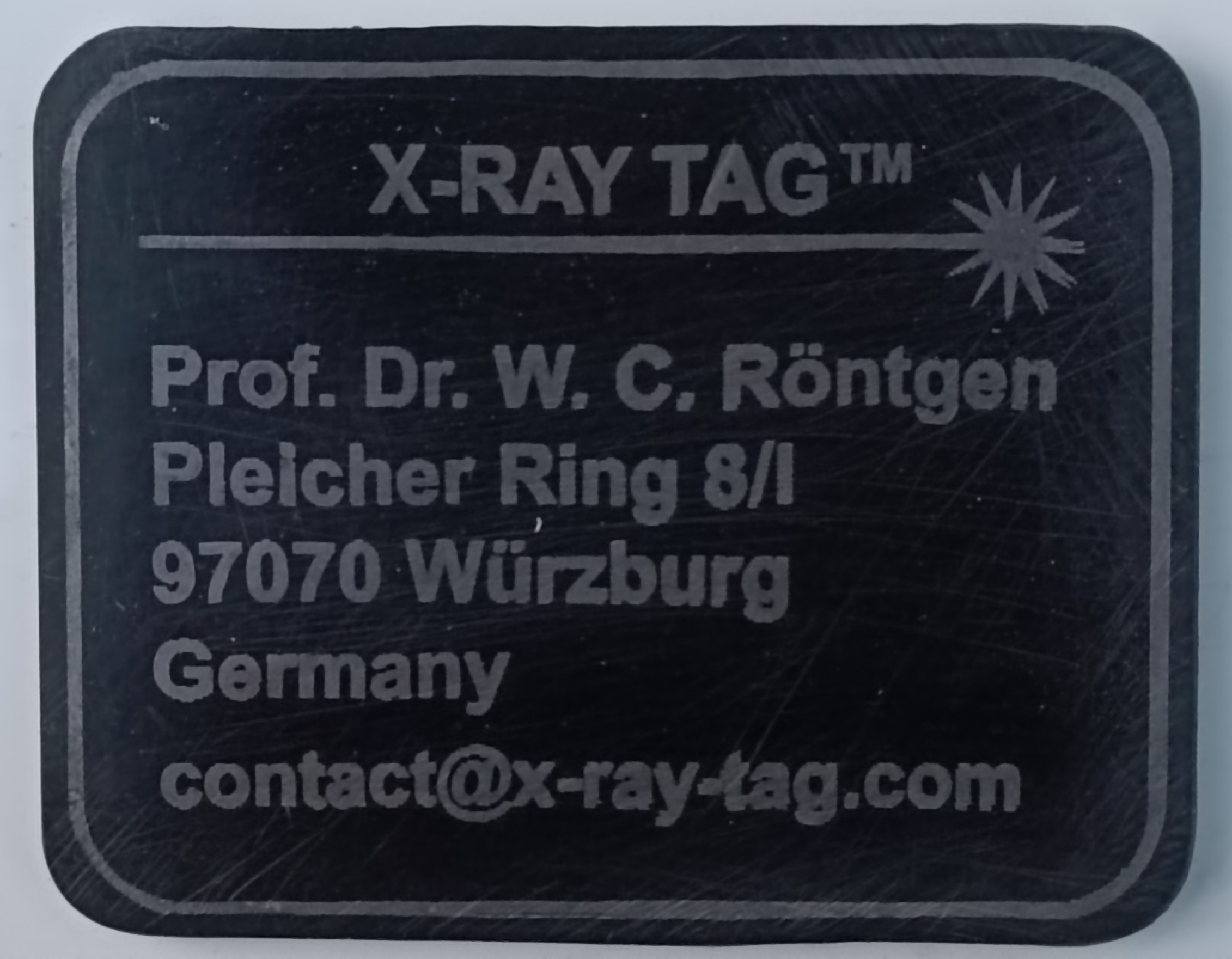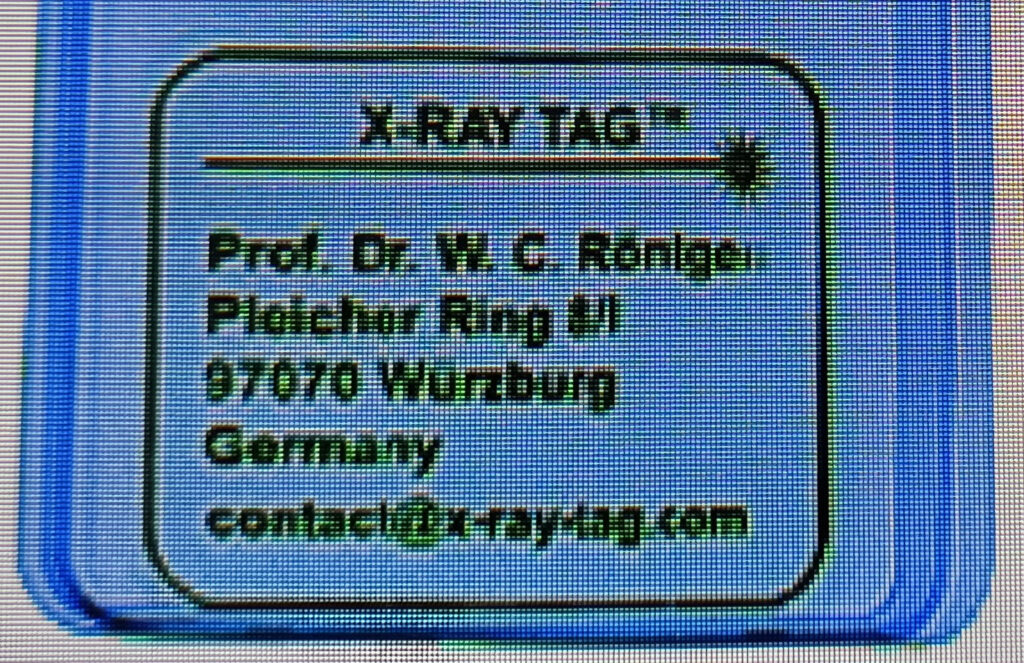“X-RAY TAG” is an abreviation, standing for “X-ray scanner readable (luggage) tag”.
The core concept of X-RAY TAG is quite simple.
Luggage X-RAY TAGs are basically business cards, containing the name, address and contact data of the owner of a piece of luggage. The tags may also contain images or graphics.

X-RAY TAGs can be used for labelling of all types of luggage.
In contrast to classical luggage tags, which are placed on the outside of a suitcase, X-RAY TAGs are placed inside of the suitcase. So they can’t get lost or be damaged, even under very rough conditions.
When X-ray scanning of a suitcase containing an X-RAY TAG is performed, the owners name, address and contact data will be displayed on the screen of the inspector. It will be shown in black, as the material used for X-RAY TAGs is nearly impermeable for x-rays.

Sounds interesting,
but why should I own an X-RAY TAG?
As mentioned before, flight luggage would be one of the application areas.
A tremendous amount of flight luggage is getting lost.
According to estimations by SITA it has been about 1 in 3000 pieces in 2022.
The main cause reported is the ripping off of any markings on the outside of the bag due to rough handling, so that the bag can no longer be traced to its owner.
If your luggage is lost, it may be opened and searched for any trace of the owner. Or the luggage may simply disappear into some storage facility.
If a suitcase is tagged with an X-RAY TAG, a simple X-ray scan will provide the information needed to link the bag to its owner, allowing for the quick recovery of lost luggage.
So while an X-RAY TAG may not prevent the loss of baggage, it can speed up and simplify the baggage recovery process.
Another application would be the personalisation of suitcases or bags of people whose luggage is frequently scanned. This could be pilots and other airline personnel, personnel at airports or other security areas such as military zones, prisons, or courts and government buildings.
Particularly in the USA, security checks, including baggage scans, are much more common than in the EU. Due to the higher density of X-ray scanners, potential customers could also be lawyers, judges or court officials.
In addition to business suitcases, X-RAY TAGs could also be applied to containers containing confidential documents or evidence.
There are also a large number of potential applications in the field of logistics or the marking of goods and consignments.

